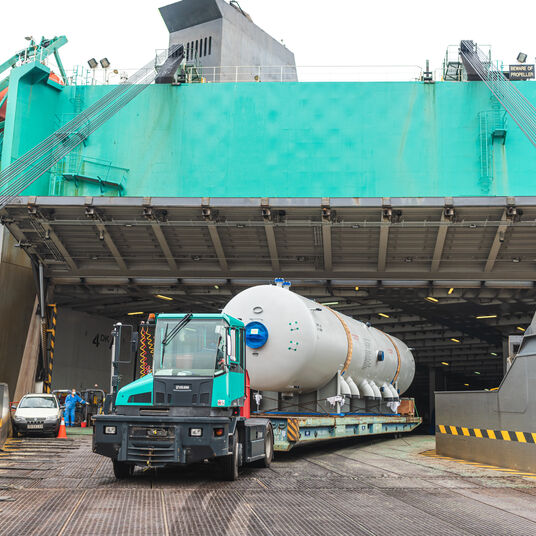Outlook for 2023: Higher volumes expected for the RoRo industry
Erik Solum, Wallenius Wilhelmsen’s head of the global market insight team, is cautiously optimistic when looking at the various factors affecting the RoRo industry in 2023.

“Yes, the global economy is facing slowing growth; there is a strong likelihood of recessions in Europe and the US. High inflation and rising interest rates contribute to the financial turbulence. Yet, the outlook for the RoRo shipping industry is more positive as we still see pent-up demand for light vehicles. We also expect the high and heavy segment to remain solid,” says Solum whose long list of risks also include Russia's war with Ukraine, inflation including high food and energy prices and the lingering COVID-19 pandemic.
Solum stresses that we need to remember that we are already at recession-low levels when it comes to sales of light vehicles; meaning that the global sales of vehicles are already down significantly more than 15 per cent in 2022 compared to pre-pandemic levels. This means that for these levels to become lower, we would need to experience a deep global recession. “What we see is that the central banks in the US and Europe raise interests to steer the economies towards more moderate recessions.”
Lack of vessels also in 2023
The global fleet consist of 600 larger roro vessels in total. Overall vessel capacity has been tight in 2022 and is expected to be tight going forward. According to Solum, there is only 11 vessels on the order book with expected delivery in 2023. “The low number of new vessels coming this year has limited impact on the general capacity situation. My competent and smart colleagues have a constant eye on how we stack our vessels to optimize capacity while maintaining the most important issue: Safe transportation and adequate cargo spacing. It is therefore important for our customers have a longer-than-usual horizon when planning their logistics.”
China opens back up
Export of light vehicles from China has boomed over the past couple of years. China has lower production costs than western produced vehicles. “There is every reason to believe that China will prioritize increasing their export numbers to gain market shares in the growing global electric vehicle market,” says Solum. “However, I believe there is a slight chance we could see a minor slowdown during the first six months of the year because it is winter in China and thus peak infection times. According to WHO, the Chinese have lower immunization rates than the rest of the world.” Possible new taxes on imported vehicles in US and Europe might also dampen off some of the steam in Chinese LV export, Solum believes.
Price on raw material stabilizing
Solum points out that the prices on raw material such as iron ore and coal are falling from peak levels but still stabilizing at a level well above historic average. “The price on raw material influences our high and heavy directly.” This segment constitutes about 30 per cent of our entire operations. One area in high and heavy is agriculture. “Prices on crops are higher than usual thus making farmers able to buy new machinery even though prices are up.” Another area of high and heavy is construction which is lagging somewhat. “We are optimistic for construction for one specific reason: The supply of semiconductors is improving. Order books in this segment are long and should keep the manufacturers busy well into 2023.”
Continued growth
“Even as there are more risk and unknowns than we have ever seen, we are cautiously optimistic when we enter 2023,” says Solum. “We hope for peaceful solutions for the geopolitical tensions and believe the green shift will contribute to accelerated vehicle sales.”

